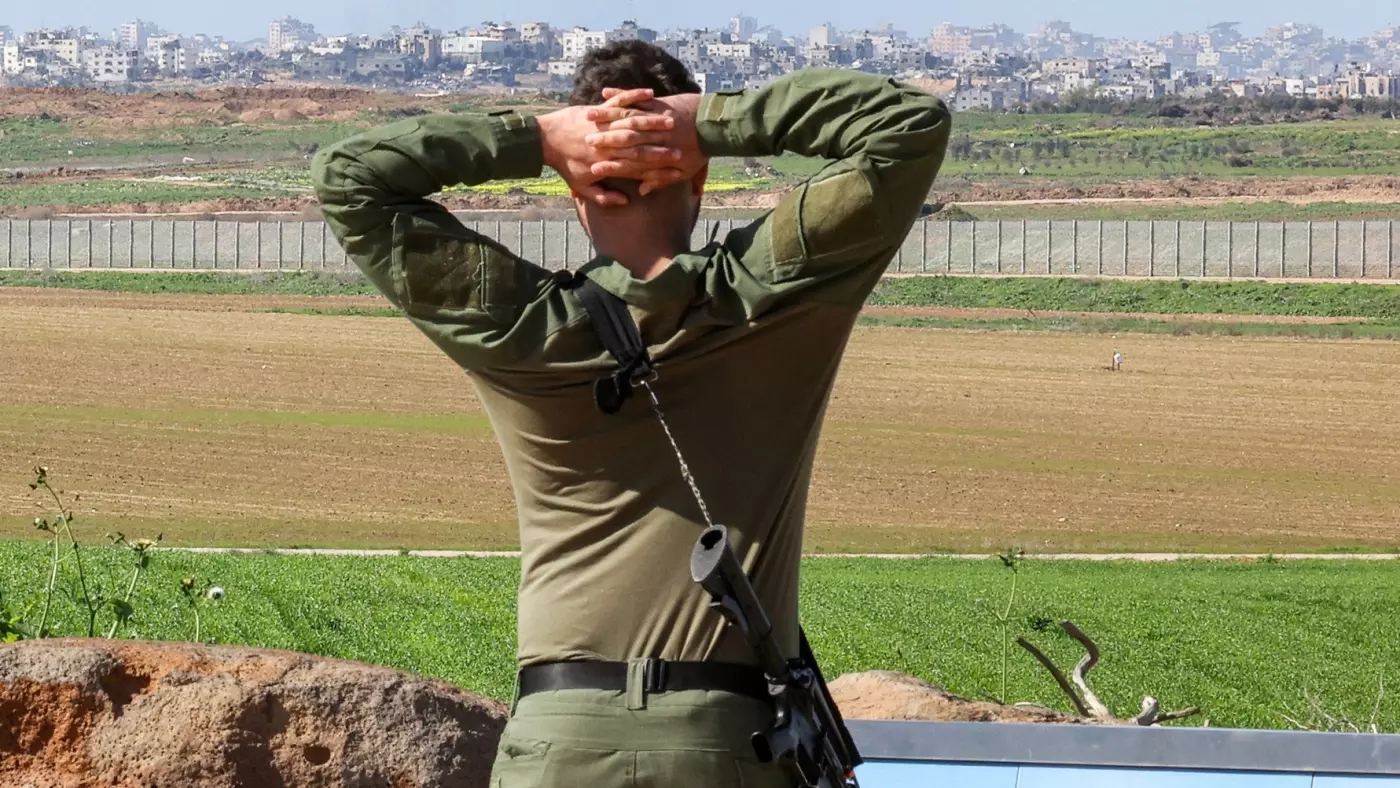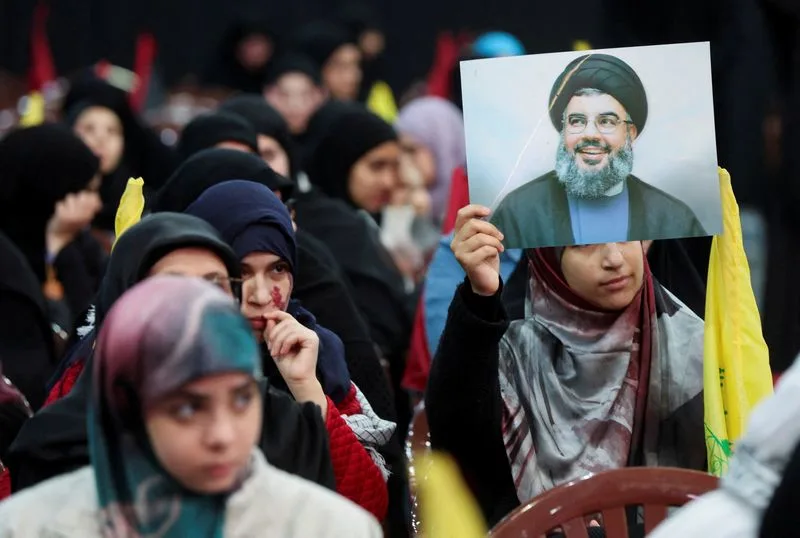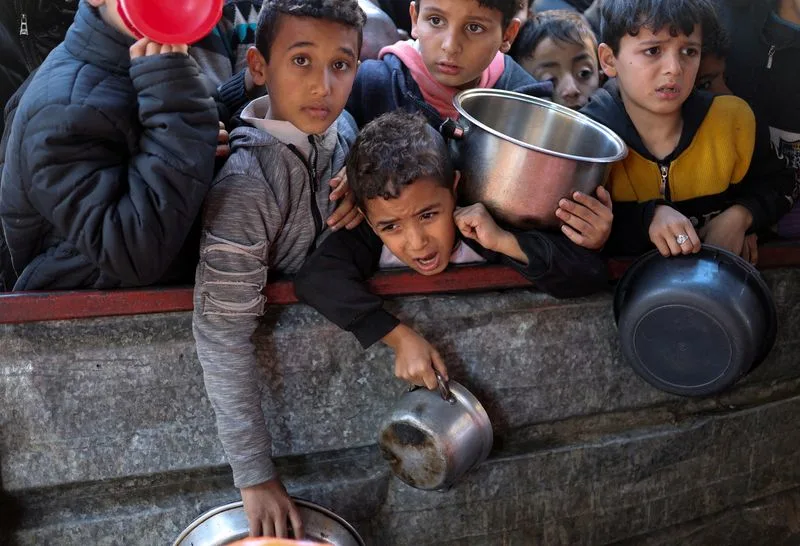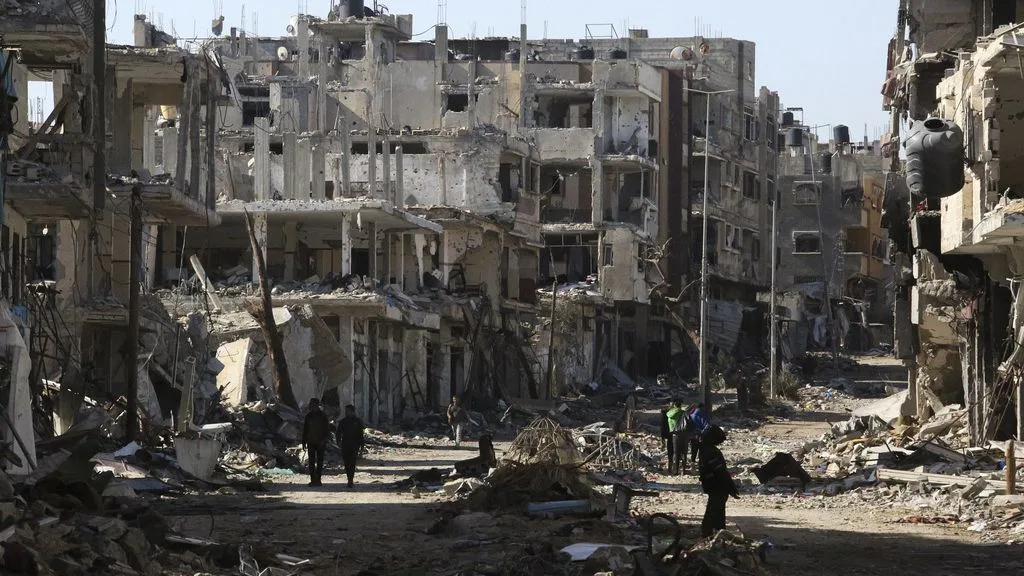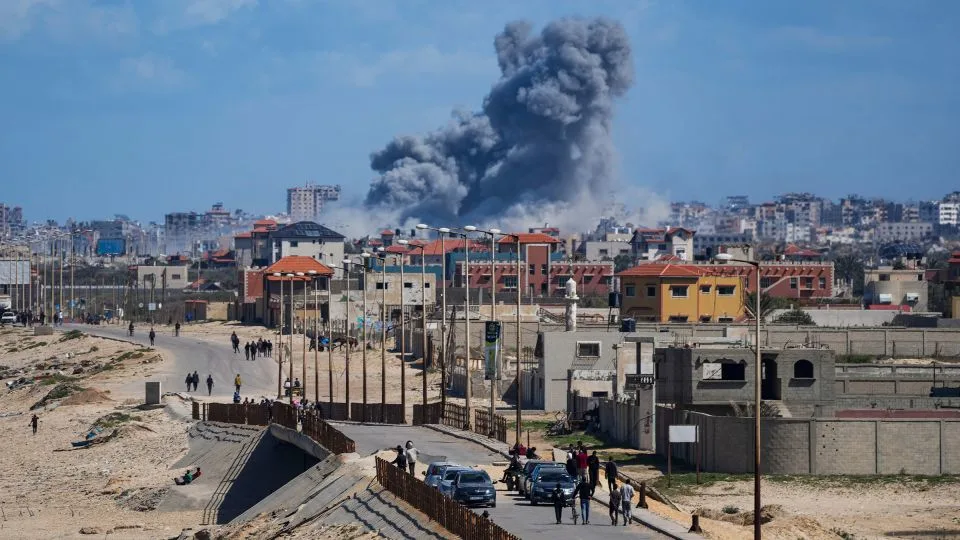World Food Programme says territory is ‘hanging by a thread’ as food supplies run out and efforts to deliver aid are derailed.
New fighting and a deepening breakdown in public order in northern Gaza have derailed a humanitarian effort to avert a famine in parts of the battered territory, with senior aid officials describing an “incredible level of desperation” as food supplies run out.
A UN attempt to deliver 10 convoys of food aid to northern Gaza over seven days was suspended earlier this week after trucks were looted by crowds, a driver was beaten and gunfire reported amid chaotic scenes.
Reports of fresh clashes between Israeli troops and Hamas militants in northern Gaza have reinforced fears that fighting may continue across the territory for many months if there is no ceasefire, further complicating relief efforts.
The looting incidents were the latest in a series of such attacks, which began around a month ago. Some have involved organised and armed gangs, but most appear spontaneous.
“In most cases, when food does get taken directly from convoys, it’s because of utter desperation, with people even eating it on the spot,” said Jonathan Fowler, a spokesperson for the UN Relief and Works Agency for Palestine Refugees (UNRWA).
Aid agencies believe there may already be “pockets of famine” in Gaza, where hundreds of thousands of people are living in the ruins of former homes with almost no functioning infrastructure.
“We’ve had to make the impossible choice to pause aid distributions in northern Gaza. There’s an incredible level of desperation against the backdrop of immense humanitarian need. A famine doesn’t have to happen. But if things don’t change, it will,” said Cindy McCain, the WFP’s executive director, on X on Wednesday.
Heavy fighting continued in Gaza on Wednesday, a day after a UN security council resolution calling for an immediate ceasefire was blocked by a US veto. Washington argued that the resolution would have imperilled efforts to free hostages.
Many in the territory have been reduced to a living on flatbread cooked over fires, with very limited supplies of salt, fresh vegetables, oil and fruit.
“We can’t take it any more,” said Ahmad, a resident of Gaza City, where entire blocks have been reduced to rubble and streets are pitted with craters. “We do not have flour, we don’t even know where to go in this cold weather. We demand a ceasefire. We want to live.”
Graph showing amount of aid entering Gaza since the current conflict began
More Israeli strikes have hit targets in Gaza over the last 24 hours, killing 103 people, according to the health ministry in the Hamas-run territory, which put the overall death toll at 29,313.
Al-Aqsa Martyrs hospital in Deir al-Balah said it received 44 bodies after strikes in central Gaza. Associated Press reporters saw bodies arriving in ambulances and private vehicles.
The aid group Doctors Without Borders said two people were killed when a shelter housing staff was struck during an Israeli operation in an area where Palestinians had been told to seek shelter.
Israel has said it takes precautions to avoid civilian casualties and blames Hamas for using civilians as “human shields”. The militant Islamist organisation denies the charge.
The war, now in its fifth month, was triggered by Hamas’s attack on Israel on 7 October last year, in which 1,200 people were killed and about 250 taken hostage.
As Israeli forces have expanded ground operations steadily southwards over the past four months, the city of Rafah – situated on the border with Egypt, and before the conflict home to about 280,000 people – has become the last refuge for more than half of the strip’s population.
Aid groups say a ground offensive could turn Rafah, now packed with crowded shelters and makeshift tents, into a graveyard, and the US has said the vast numbers of displaced civilians must first be moved out of harm’s way.
Abdel Rahman Mohamed Jumaa said he lost his family after an airstrike in the city.
“I found my wife lying in the street,” he told AFP. “Then I saw a man carrying a girl and I ran towards him and … picked her up, realising she was really my daughter.
Seven patients died at Khan Younis’s Nasser hospital after power cuts caused by a days-long Israeli raid on the premises, the World Health Organization said earlier this week.
A spokesperson for the Gaza health ministry on Wednesday described the “unbearable” situation at Nasser hospital, which he said posed “a real danger to the lives of medical staff and patients”. He described a lack of oxygen and basic supplies, piles of medical waste and flooding by sewage water.
Benjamin Netanyahu, Israel’s prime minister, has said the war would continue until its forces have destroyed Hamas.
On a visit on Tuesday to military drone specialists, Netanyahu said Israel wanted the release of an estimated 130 remaining hostages but was “not prepared to pay any price, certainly not the delusional prices that Hamas is demanding of us, the meaning of which is the defeat of the state of Israel”. About 30 of the hostages are thought to be dead.
Overnight the IDF announced the death of another soldier, bringing to 237 those officially recorded as killed in Gaza since the start of the Israeli offensive.
Efforts to negotiate an end to the crisis have made limited progress.
Qatar and Egypt have proposed a plan to free hostages in return for a pause in fighting and the release of Palestinian prisoners, but Israel and Hamas have so far failed to agree on a deal.
A ceasefire would also allow more humanitarian aid to reach Gaza.
The UN has called on the IDF, which is responsible for safe passage for aid convoys through areas they control, to help efforts to distribute aid.
“Aid piling up at the crossing is evidence of an absence of this enabling environment amidst enormous needs,” said Eri Kaneko, a spokesperson for the UN humanitarian affairs office.
“The UN and our humanitarian partners have not been able to regularly pick up supplies from the crossing points due to safety concerns and a breakdown of law and order,” she said.
Aid officials have said that between 1 January and 15 February, 77 missions were planned to deliver aid to the north of the Gaza Strip. Of these, the UN said “12 were facilitated by the Israeli authorities, three were partially facilitated, 14 were impeded, 39 were denied access and nine were postponed”.
Israel, which checks all trucks entering Gaza from both crossings, blames the UN for the fall-off in deliveries, and says it is prepared to speed up the clearance of aid.
“The bottleneck is not on the Israeli side,” Col Moshe Tetro, head of Israel’s coordination and liasion administration for Gaza, told a news briefing.
Recent UN figures show a precipitous drop in aid supplies reaching Gaza. Before the conflict, Gaza relied on 500 trucks with supplies entering daily, and even during intense fighting in January about 200 aid trucks made it through on most days. From 9 February the daily average has fallen to just 57 trucks. On seven of those 12 days, 20 or fewer trucks made it through, including just four trucks on 17 February.
The war has set off clashes elsewhere in the Middle East, drawing in Iran-backed armed groups in Lebanon, Syria, Iraq and Yemen. Israel has traded almost daily cross-border fire with Lebanon’s Hezbollah, and US and British forces have hit Yemen’s Houthi rebels to deter their attacks on shipping in the Red Sea.
In Syria, state television said an Israeli missile strike killed at least two people in Damascus. Israel declined to comment.
Violence has also flared in the occupied West Bank, where the Israeli army said its troops killed three Palestinian militants during an overnight raid in the northern city of Jenin.
LINK: Gaza aid deliveries paused amid ‘incredible level of desperation’ | Israel-Gaza war | The Guardian

